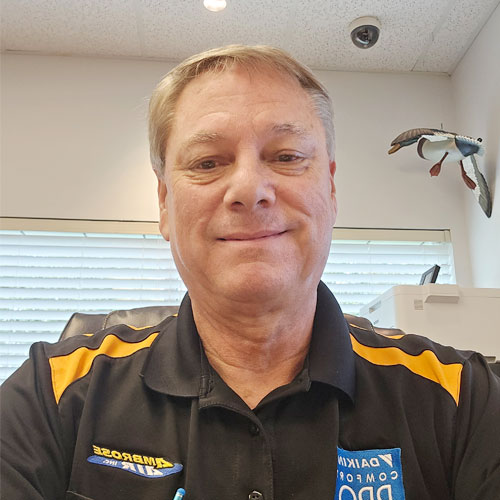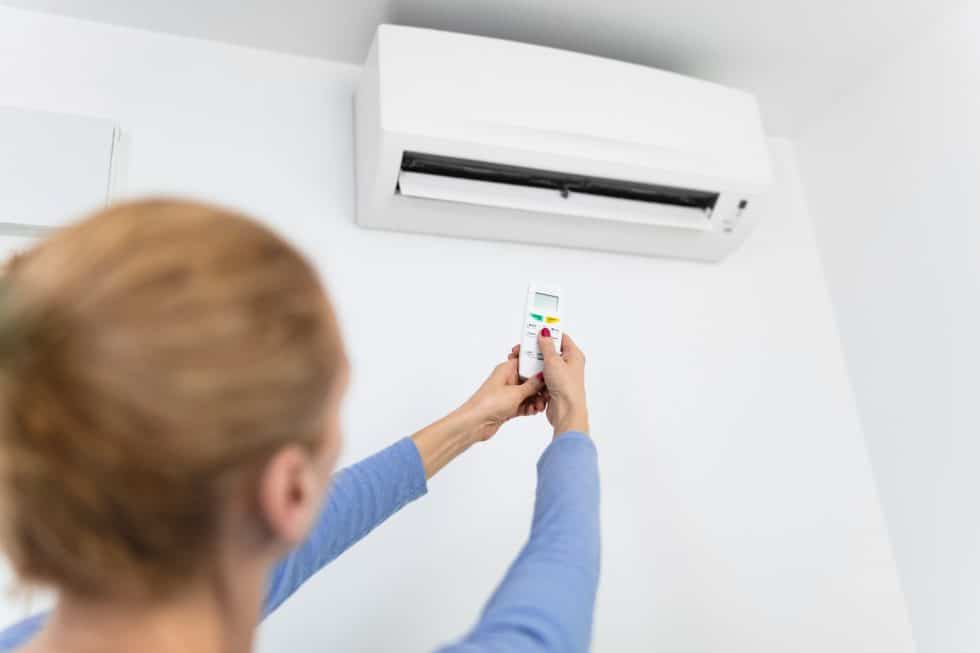Find out more about our air conditioning service in Orlando.
How Does My Air Conditioning Work?
You might think that your air conditioner works by creating cold air out of nothing. That’s not quite what happens, though. Instead, your air conditioner removes warm air, leaving you with cooler air.
Main Components
Your usual air conditioning uses a chemical called refrigerant, along with three main parts: a compressor, a condenser coil, and an evaporator coil.
These three components convert the refrigerant from gas to liquid and back to gas before the fan inside blows air across the cool evaporator coil to help absorb the heat inside the home.
In a nutshell, the chemicals inside the AC unit absorb the hot air from your home, leaving you with your cooler air. That cooler air circulates, and this process repeats until your home is cool enough.
The Simplified Process
You already know that your standard AC will absorb that hot air, so let’s simplify the process.
The unit starts by using the refrigerant, which absorbs heat from the outside. Then, that refrigerant will begin to get hot, and as it gets hot, it takes in heat from the inside of the house and transfers that heat to the outside.
Without that heat now, the refrigerant will begin to get cold again. So the process will start all over again.
Spreading Cool Air
You might then question how your little AC unit can absorb all the hot air and spread cooler air throughout your home. Well, it works using the vents in your home.
Your AC will absorb the hot air using the vents in your home, while cooler air will be blown out using the ducts. This process of absorbing hot air and pushing out cooler air will continue again and again until your home reaches your desired temperature.
When the thermostat senses that the interior temperature is at the right level, it shuts the air conditioner off. When the room heats back up later, the thermostat will turn the air conditioner on until it is once again cool.
Unit Type
There are mainly two types of air conditioning units: a heat pump system versus a straight cool system with electric heat.
A heat pump system involves using a reversing valve to alter the flow of the refrigerant, thereby making the home cool or warm. Air blows over the evaporator coil and transfers heat to the refrigerant from the air. This heat is then circulated within the refrigerant to the condenser coil, where a fan blows air over the coil to release it. In this way, heat is transferred and pumped from area to area.
Heat pump systems are popular because of how energy efficient they are. They’re most popular in states like Florida, where the average temperature is above 40 degrees Fahrenheit.
A straight cool system consists of a condensing unit and an air handler. The condenser reduces the temperature by removing moisture in the air while the air handler is in charge of distributing the cold air all around. In winter, the system uses electric heat trips to warm up your home. This system is often used in colder regions, where the need for warmth is higher.
Conclusion
The air conditioning unit is one of those things in your home that works in the background without you thinking twice about how it works.
However, understanding how it works can come in handy if your air conditioning is ever not working as it should or if it breaks down. You might also want to consider something energy efficient since the whole process does consume a lot of electricity.

Pat Ambrose has over 40 years of experience in the HVAC industry, serving Central Florida. He tested for and received his class B air conditioning license almost 35 years ago and then improved that to a class A license in the late 90s. Pat and his wife started their own HVAC business in the early 90s, serving Central Florida. Pat still serves as the president of Ambrose Air, Inc., where he works as the chief operating officer. Over his years in business, Pat has served as the president of both the local association (ACCA/CF) and the state association of contractors (FRACCA). His expertise has helped his customers on many occasions, solving air conditioning problems that others had missed.


